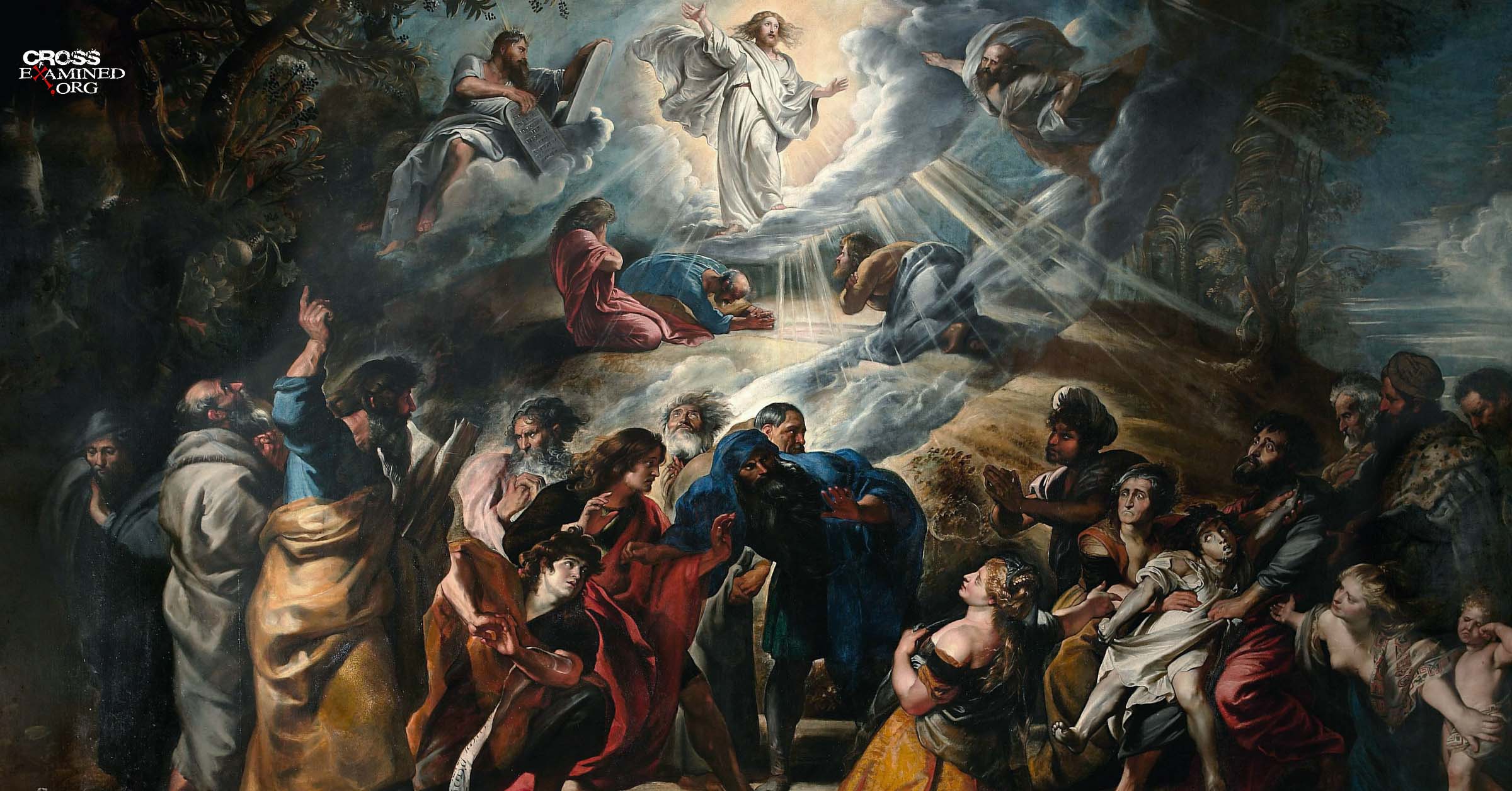The Evidence For Jesus’ Resurrection, Part 6: Facts (4) and (5) The Postmortem Appearances To Paul and James
This is part 6 in a blog post series on the evidence for the historicity of Jesus’ resurrection. The Minimal Facts Case for the resurrection of Jesus is what I’ve been defending the past 5 articles, and in part 2, I explained what a minimal facts approach is. Part of a minimal facts approach is a two-step process: (1) establishing 5 historical facts through the use of “the criteria of authenticity” and (2) discerning what the best explanation is for those 5 facts. In part 3, we saw that the historical evidence that Jesus died by Romans crucifixion is overwhelming, establishing the first of the five minimal facts. In part 4, we examined several pieces of evidence that Jesus’ tomb was found empty by a group of his women followers the following Sunday after His crucifixion. In the previous blog post, we saw that the historical evidence is strong that Jesus’ twelve disciples had visual experiences of Jesus after His death.
There are 5 minimal facts that undergird the inference to the resurrection
1: Jesus died by crucifixion.
2: Jesus’ tomb was empty the following Sunday.
3: The disciples experienced postmortem appearances.
4: A church persecutor named Paul converted to Christianity on the basis of what he perceived to be an appearance of the risen Jesus.
5: The skeptic James converted on the basis of what he perceived as a postmortem appearance.
In this blog post, we shall look at the evidence for those last two minimal facts, and then we’ll move on to figuring out what the best explanation of these 5 facts are.
The Church Persecutor Paul
It’s pretty obvious that Paul claimed to be an eyewitness of the resurrection. In 1 Corinthians 15:8, immediately after citing the early resurrection creed, he said: “last of all, as to one untimely born, he appeared to me also.” Earlier in that same letter, he asked rhetorically “Am I not free? Am I not an apostle? Have I not seen our Lord?” (1 Corinthians 9:1). So, from Paul’s own pen he tells us that he had a postmortem appearance experience.
However, some skeptics may balk and say “Yeah, he said he saw Jesus raised from the dead. But anyone can claim anything. I can claim I saw Santa Claus leaving toys under my Christmas tree last December. That doesn’t make it true. How do we know Paul isn’t just lying?” This is a fair question. This is why in prior writings, instead of merely pointing to where Paul says he saw Jesus, I made an inferential case for his postmortem appearance. There are several historical facts about Paul which, if you ask me, only make sense if Paul actually had a postmortem appearance experience.
*Before Paul Was A Christian, He Was A Persecutor Of The Church
We have good historical evidence that prior to becoming a Christian, Paul was a persecutor of Christians. How do we know? Because in his epistles, he says he was. In 1 Corinthians 15:9, after citing the creed to the Corinthians, Paul said “For I am the least of the apostles and do not deserve even to be called an apostle because I persecuted the church of God”, likewise in Galatians 1:13-14, Paul said “For you have heard of my previous way of life in Judaism, how intensely I persecuted the church of God and tried to destroy it. I was advancing in Judaism beyond many of my own age among my people and was extremely zealous for the traditions of my fathers.” In 1 Timothy 1:13, Paul said: “Even though I was once a blasphemer and a persecutor and a violent man, I was shown mercy because I acted in ignorance and unbelief.”
Now, I am inclined to believe that Paul is telling the truth here on the basis of three reasons.
1: The Principle of Embarrassment. The principle of embarrassment states that if an author mentions something that is embarrassing to himself, embarrassing to someone he cares about, hurts an argument he’s trying to make, or is in any way detrimental to him, yet he mentions it anyway, it’s very likely not to be made up. People make up lies to make themselves look good; they don’t makeup lies to make themselves look bad. Paul is mentioning details about himself that cast him in a pretty bad light.
Think it about it for a moment; if you were writing a letter to someone, would you lie about having a drug abuse problem that you don’t actually have? If you were writing a letter to some friends, would you make up lies about how you terrorized your local neighborhood? “Dear Todd, I’m doing well here in my new home in North Carolina. By the way, I became a Christian, but prior to doing so, I went into churches and cut Christians’ heads off en masse. From, Bobby.” Are you going to just make stuff like that up? I don’t think so! You probably wouldn’t even admit something like that even if it were true! But you especially wouldn’t say that if were not true. People don’t makeup lies that make themselves look bad! Paul would never say that he was a persecutor of the church if it wasn’t true. Paul would never say that he purposefully went around terrorizing people if that didn’t actually reflect reality.
2: The Principle Of Multiple Attestation. Not only does Paul say that he was a persecutor of the church, but Luke mentions it as well in the book of Acts (8:1-4, 9:1-2). Paul and Luke are independent sources, and therefore, there are multiple attestations to Paul being a persecutor. It is highly unlikely that both Paul and Luke independently fabricated the same lie. On the basis of the principle of multiple attestations, we have good reason to believe that Paul persecuted the church.
3: Paul Had A Reputation
Let’s keep something in mind here: in all of the epistles, Paul is writing to someone. And in Galatians 1:13, Paul said “For you have heard of my previous way of life in Judaism, how intensely I persecuted the church of God and tried to destroy it.” (emphasis mine). Paul says that he had a reputation for being a persecutor of the church, and tells his readers that they knew of that reputation. Now, if Paul wasn’t really a persecutor of the church, his readers would have immediately called him out for lying. You don’t say “You know about that bad stuff I did. You’ve heard about it.” to someone unless you did the thing you’re talking about.
*Paul Became A Christian, And Then Suffered And Died For Preaching The Gospel
Paul obviously became a Christian himself sometime after persecuting Christians. Like with the disciples, we know that Paul actually believed the message he was preaching because he endured terrible suffering throughout his life for the sake of the gospel, and was eventually killed for his Christian faith. Seven Independent sources attest to Paul’s suffering and martyrdom.
Paul himself recounts instances of his suffering. “Five times I received from the Jews the forty lashes minus one. Three times I was beaten with rods, once I was pelted with stones, three times I was shipwrecked, I spent a night and a day in the open sea, I have constantly been on the move. I have been in danger from rivers, in danger from bandits, in danger from my fellow Jews, in danger from Gentiles; in danger in the city, in danger in the country, in danger at sea; and in danger from false believers. I have labored and toiled and have often gone without sleep; I have known hunger and thirst and have often gone without food; I have been cold and naked. Besides everything else, I face daily the pressure of my concern for all the churches.” – 2 Corinthians 11:24-28
Some of the specific sufferings mentioned by Paul in 2 Corinthians are also reported by Luke. One of the shipwrecks was recorded in Acts 27:14-44, Paul was stoned in Acts 14:19, and Acts 16:22-24 records an instance of Paul being scourged. The book of Acts records several other hardships Paul endured for being a Christian, but I won’t mention them here.
Clement of Rome[1], Tertullian[2], and Dionysius of Corinth[3] (cited by Eusebius) mention his martyrdom. Polycarp[4] and Origen[5] record it as well. Paul was beheaded during the harsh persecution of Emperor Nero in the A.D 60s.
In all, we have 7 independent sources that testify that Paul suffered and died for preaching the gospel. On the basis of the principle of multiple attestations, we, therefore, have good grounds for affirming that Paul actually did suffer and died for the gospel.
*The Best Explanation: Paul Actually Saw Jesus
Now, how do we account for Paul’s radical, sudden change from Christian destroyer to Christian leader? From someone who caused martyrs deaths to someone who died a martyr’s death himself? I can think of no other explanation than the one Paul himself gave, “Then he appeared to me also, as to one untimely born.” (1 Corinthians 15:8). I think this is the only logical way to explain why Paul would go from terrorizing Christians to trying to persuade people to become Christians (even to the point of horrid suffering). Again, you can try to explain away Paul’s postmortem appearance experience if you want to, but you have no grounds to deny it altogether.
The Skeptic James
We now come to our fifth and final minimal fact: the conversion of the skeptic James. The Gospels tell us that Jesus had several siblings. Jesus’ siblings included James, Jude, Simon, plus some sisters whose names were never given. Most skeptics I’ve conversed with love to go after this minimal fact because they say it has the least amount of evidence for it. After all, it’s not mentioned anywhere except in one line, and that line is in the creed cited by Paul in 1 Corinthians 15.
Nevertheless, I still think we have good grounds for affirming that this appearance occurred. First of all, as I said in the previous blog post, we have good reason to believe Paul got the creed from James himself. Secondly, the creed is extremely early (just 5 years after the death of Jesus) so had James not really experienced a postmortem appearance, he could have publically rebuked Paul for lying. The severe earliness of the creedal tradition and the probability that Paul got the creed from James has to count for something, right?
However, I think that just as with Paul, we can make an inferential argument for the postmortem appearance to James.
*James Was A Skeptic During Jesus’ Lifetime
James and his other brothers, we are told, were not believers during Jesus’ lifetime. We know this based on:
1: The Principle Of Embarrassment
It was embarrassing for a rabbi’s family to not accept him back in those days. It was embarrassing for a rabbi’s family to be opposed to him in some way or another back in those days. So this isn’t very flattering for Jesus, but it gets worse! In fact, Mark 3:20-35 tells us that Jesus’ family thought he was crazy and that they had come to seize him and take him home! This doesn’t paint Jesus or His family in a very good light, given the stigmatism back then. Therefore, it’s highly unlikely that the gospel writers would have invented skepticism on the part of Jesus’ brother James.
In fact, John 7 recounts a rather nasty story where Jesus’ brothers try to goad him into a death trap by showing himself publicly at a feast when they knew that the Jewish leaders were trying to kill him! Jesus’ brothers were trying to sabotage him! Why in the world would John place Jesus’ brothers in such an ugly light if such an event never took place?
2: The Principle Of Multiple Attestation
Not only does Mark mention it (chapter 3), but John mentions it as well (chapter 7). Mark and John are independent sources, and therefore, James’ skepticism is multiply attested. So, we’ve established that James was a skeptic.
*Just A Short Time After Jesus’ Death, James Came To Believe That Jesus Had Risen From The Dead.
Even though James was a skeptic, we know that later in the early church, James emerges as one of the pillars of the New Testament church, and one of the leaders of the church.
Moreover, he was eventually martyred.
Multiple Attestation
This is mentioned in both the book of Acts (21:17-20) as well as by Paul in his letter to the Galatians (2:9). Again, Paul and Luke are independently reporting this. Thus, we know this on the principle of multiple attestations.
*James Was Martyred For His Christian Faith
Multiple Attestation
We have the testimony of Flavius Josephus, Hegesippus, and Clement Of Alexandria[6] that James was martyred for his belief in his brother as the risen Christ. James’ martyrdom is multiply attested in these three sources.
*The Most Likely Explanation For Why James Went From Being A Skeptic To Being A Believer Virtually Overnight Is That The Risen Jesus Appeared To Him As 1 Corinthians 5:7 says.
I think the best explanation for James’ rapid conversion is that he believed the risen Jesus appeared to him.
New Testament critic Reginald H. Fuller says “Even if there were not an appearance to James mentioned by Paul, we should have to invent one to explain the transformation that occurred in James between the time of his unbelieving days when Jesus was alive and his time of leadership in the early church”[7]
That’s exactly the argument I’m making here. 1 Corinthians 15:7 aside, we have historically established that James was (1) a skeptic prior to Jesus’ death, (2) shortly became a Christian following Jesus’ death, and was willing to die for his Christian faith. How can we explain James’ overnight transformation if not that James had an experience which he perceived to be a visitation of the risen Jesus? I don’t think we can.
Conclusion
We have come to the end of the first step. We have historically established 5 facts which will undergird our inference to Jesus’ resurrection.
The 5 minimal facts that undergird the inference to the resurrection are:
1: Jesus died by crucifixion.
2: Jesus’ tomb was empty the following Sunday.
3: The disciples experienced postmortem appearances.
4: A church persecutor named Paul converted to Christianity on the basis of what he perceived to be an appearance of the risen Jesus.
5: The skeptic James converted on the basis of what he perceived as a postmortem appearance.
In the next blog post, we’ll see what is the best explanation of these 5 facts. At face value, it seems like The Resurrection Hypothesis is how we should explain them. However, perhaps we should examine other alternatives before we appeal to the supernatural.
[1] Clement Of Rome, 1 Clement 5:2-7
[2] Scorpiace, 15, in Roberts, Donaldson, and Coxe, eds. and trans., The Ante-Nicene Fathers.
[3] H.E. 2.26;
[4] Polycarp, “To The Philippians,” 9.2
[5] Origen, as cited by Eusebius in Ecclesiastical History
[6] Josephus, Antiquities Book 20, Chapter 9, Hegesippus as cited in “Eusebius. Church History Book II Chapter 23. The Martyrdom of James, who was called the Brother of the Lord”, Clement Of Alexandria, also cited by Eusebius in ibid.
[7] Reginald H. Fuller, The Formation of the Resurrection Narratives (New York: Macmillan, 1980), 10.
Original Blog Source: http://bit.ly/2GgcRam












Leave a Reply
Want to join the discussion?Feel free to contribute!